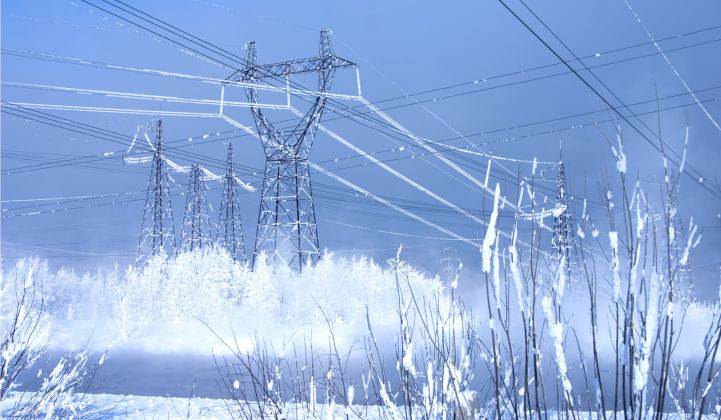This article is not about which generating technologies caused the blackouts experienced in Texas and states across the Midwest this week. However, these events can get us thinking about where the industry goes from here.
We do know a few things already. First, the U.S. natural-gas supply network was stressed by record demand and prices. The record-high gas demand would have been even higher without the rolling blackouts that were imposed because more homes with central heat would have run either gas-fired heaters or electric heat pumps, which would have been powered mostly by coal- or gas-fired generators if those weren't impacted by outages.
Based on data from the U.S. Energy Information Administration, for the nine-day stretch from February 9 through February 17, natural gas provided about 35 percent of the power generation mix across the Lower 48 region of the U.S., with other fuels providing 65 percent.
Coal-fired power plants are targeted for rapid closure over the next 15 years. Nearly every week, press releases announce the early closures of fossil-fired plants by utilities and independent power plant owners in pursuit of decarbonization goals, or by coal plant operators grappling with environmental regulations and low operating margins.
Meanwhile, U.S. coal plants provided about 30 percent of the country's generation mix over the previous nine days. Without their generation during this latest extreme cold event (and the 2014 and 2018 and 2019 polar vortex events), the capacity of the gas network could have been greatly exceeded.
Utility-scale wind and solar plants provided 6 percent of the fuel mix, or possibly slightly more, as some balancing authorities with small amounts of solar report it in the "other" category.

The past nine days seem to highlight a fuel-diversity dilemma for U.S. decarbonization targets and policies. Many utilities' recent integrated resource plans seek to quickly replace coal plants with new, or existing but underutilized, natural-gas plants as a "bridge fuel," while also adding large amounts of wind and solar resources over the next five to 20 years.
Other plans avoid natural gas altogether, instead adding short-duration energy storage (capable of providing from 4 to 8 hours of energy) in addition to renewables. But those will still at times require additional natural-gas generation via market purchases during long stretches of low renewable energy output, such as seen during this current event. (It's important to note that most of the U.S. wasn't experiencing icing problems like those that reduced wind power output in Texas. Instead, other regions were experiencing low wind speeds and typical low winter solar output.)
Weighing the costs of redundant natural gas or renewables build-outs
Any increase in natural-gas usage during a repeat polar vortex event would likely lead to more grid reliability problems, both on the gas and electric sides. With coal plants retiring, the only way to prevent this would be:
- Expand U.S. natural gas supply/network to support even higher send-out for an extended cold snap
- Build enough renewable energy sources to offset the loss of coal generation and prevent increased natural gas demand during an extended cold snap
Option 1 is challenged by several variables. First, both government policies and public sentiment (environmental views or NIMBYism) are against building new natural-gas infrastructure. Second, with the endgame being decarbonization, the rapid build-out of renewables will eventually displace the majority of natural-gas demand for most of the year except during extreme events, such as when low renewable production occurs simultaneously with high demand.
A low load factor natural-gas grid becomes a very expensive grid to maintain, just as low load factor electricity customers (residential) are more expensive to serve than high load factor customers (data centers). The resulting financial return on additional natural-gas infrastructure investment would be minimal or negative under a rapid renewables build-out scenario. Even new peaking liquefied natural gas storage might sit for years without being used in between extreme cold events, particularly in places like Texas.
Option 2 has its own challenges. On top of replacing coal generation, the U.S. could potentially lose over 5,000 MW of nuclear capacity this year based on announced plans. Together, these plants provided almost 157,000 average megawatts of generation during the past nine days. Meanwhile, wind and solar provided about 30,000 average megawatts. Without those coal and nuclear resources, and without long-duration energy storage measured in weeks instead of 4 to 8 hours, the U.S. would need a fivefold increase in generation from wind and solar to prevent an increase in natural gas usage during a polar vortex repeat, although there are other renewable energy technologies that might be able to chip in a little. That requirement only goes up if there is a rapid increase in electric vehicle charging demand.
The U.S. wind fleet is now over 125 gigawatts of installed nameplate capacity, and utility-scale solar totals over 40 GW of nameplate capacity. Based on their performance during this nine-day stretch, I estimate something north of 700 GW of new wind and solar capacity (optimal mix TBD) would be required to replace what the retiring generating resources produced during the nine-day cold wave.

Of course, 700 GW of new renewable capacity would be well in excess of the amount required to replace coal generation over the course of a year. Still, this type of hypothetical is informative for the energy industry as it moves forward with decarbonization while providing enough fuel diversity/security to meet extreme system conditions.
I should mention that Wood Mackenzie's latest Long-Term Outlook forecasts the U.S. adding over 1,300 GW of new combined wind and solar capacity by 2050 in order to reach 85 percent decarbonization, plus over 400 GW of battery storage. Even so, the system will still require some backup natural-gas generation for periods of low renewable energy output.

***
Wade Schauer is Americas research director at Wood Mackenzie Power & Renewables.
